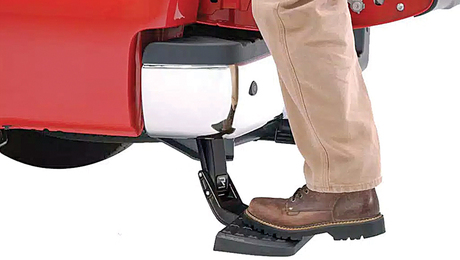Well, thanks to your advice, i’ve decided to do a masonary patio. I’m well aware of how to complete the task with concrete, however, I would like to explore the option of patio block.
I think it would look better than plain gray concrete (stamped and colored concrete is out of the qestion do to price) but will it hold up to frost heaves? (as I am doing this in northern wisconsin)
Patio is 12′ x 28′, what steps would I need to follow to correctly complete this project so it would hold up over time? Would it still need to be sloped from the house?
Cost comparison to concrete? Thanks for the insight.
upnorthframer
“If you think education is expensive, try ignorance!!!!”















Replies
Never mind the cost of stamped, that stuff is downright scary slippery in an ice/snow climate!!
Not that I did anything but sleep at a Holiday Inn last night, but it just now strikes me that in a lot of ways it's just like concrete prep....good drainage, good base layer, & good grading make for a good job....
a HO here who built one.
going to need a good base and slope from house
want good drain field. IIRC the folks who manufacture them have instructions on how to use them prepare for them.( example http://www.idealconcreteblock.com/install.cfm )
you said "patio block" big range of things that fall into what you can build a patio from, hence cost can vary. some places how sites so you may be able to see price difference between types.
want to make sure it's square where it is suppose to be (the smaller the block, the easier to fudge). and know how to cut it where you need to.
also expect weeds to grow up between the blocks.
yes it can have frost heaves but proper preparation will eliminate or minimize this.
bobl Volo, non valeo
Baloney detecter WFR
"But when you're a kibbutzer and have no responsibility to decide the facts and apply the law, you can reach any conclusion you want because it doesn't matter." SHG
Edited 4/3/2007 12:50 pm ET by bobl
Grade it flat and sloped some away from the house. Provide drainage at the lower end or corner. Lay down heavy black plastic over the entire area. Overlap joints by at least 3". Then spread out about 1/4" of "play sand" or the equivalent. Lay your block on this and use the sand to handle any imperfections in the dirt. Use the thinnest layer of sand you can; dirt will seep in and you don't want enough to let a root system develop for weeds. You can fill small gaps between blocks with sand.
I've done brick this way with great results.
George Patterson, Patterson Handyman Service.
When you did the brick, did you "frame" the area with landscape timbers or something else - or nothing at all?
I did not frame them. I was running a herringbone pattern, with the outside edge of brick running the long way as a border. This worked great for the driveway, but not quite so well for the walkways. The edge bricks tended to gradually tilt towards the lawn, and grass had a tendency to creep into the cracks there. Were I to do it again, I would use one of the various plastic or aluminum edging products. These are "L" shaped and go under the brick. One could also drive in some of the plastic edging made for flowerbeds. This has one advantage; you can do it after the brick is down. I dislike landscape timbers and don't use them for edging.Now, I did bring the black plastic up around the edge of the brick and tamp dirt in behind it on the yard side to form a shield to keep weeds out of the cracks between the bricks. That did only a so-so job.George Patterson, Patterson Handyman Service
Did our sunken patio with them about 5 years ago. Used 12" x 12" pavers (about a buck apiece). Dug out the area down to about 6", put down weed block, then 4" of tamped gravel. Put the pavers in nice and tight, with pressure treated ties at the borders. Haven't had any come loose. No heaving, weeds or ponding either.
Here's one thing not to do.
The former owner of my house built a brick patio in the back yard. He put a drain in one corner, but he made the patio level. He mortared all the joints between the bricks, but he laid the brick directly on the dirt.
The result is a patio that is uneven due to frost heaves. A layer of dirt builds up every year due to sediment in the water that flows over it. When we bought the house, we were surprised that the gas grill was well out in the yard. It actually wasn't; the grass had grown over about 2/3 of the patio and it was on the edge. The mortar joints have cracked due, in part, to the frost heaves. Plants growing in the cracks have finished the job in most places.
Replacing that is one of the top things on my "if I win the lottery" list.
George Patterson
Slope ¼" per foot.
Did mine with 10" crushed bluestone base, filter cloth,
stone dust (compacted) and then laid random sized bluestone
squares (never again, not the same thickness!) edged with brick.
L-shaped plastic edging spiked in to hold the brick in place.
One side has an "s" shape, had to cut stone to fit.
6 years in it hasn't moved. In hindsight pavers would've been
easier, but that said it was about $3,500 in materials and a
sore back.
Mclaren